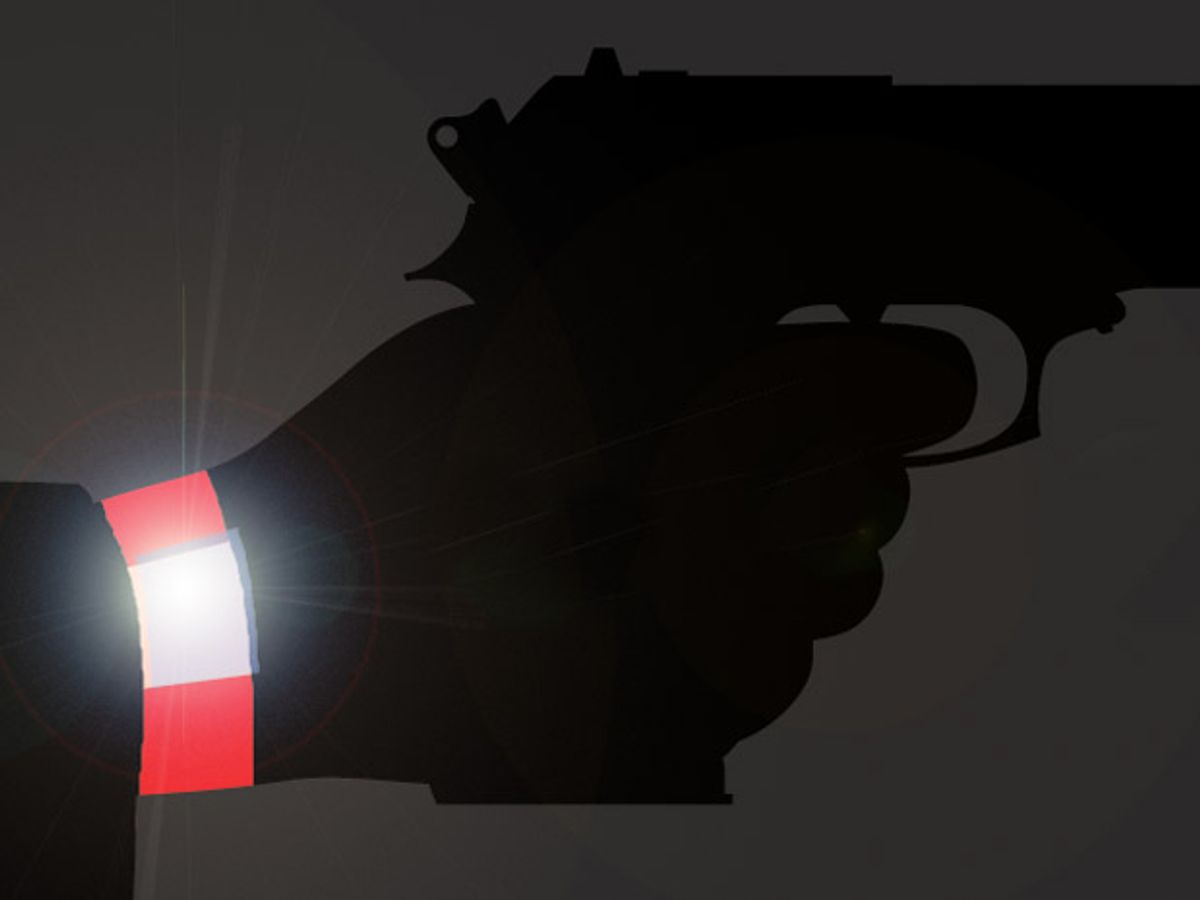Some convicted criminals released on parole or probation are required to wear electronic monitoring devices so that police officers and court officials can track their movements. Despite these precautions, individuals serving their sentences in the community are still responsible for almost half of the incidents of gun violence prosecuted in the United States, says University of Pennsylvania criminology professor Charles Loeffler. Adding existing technology to current monitoring devices, though, could help deter these shooters by recording and reporting when they fire a gun.
In a paper released last week in the online journal PLOS ONE, Loeffler reported that wearable accelerometers, like those commonly used to track the distance logged by joggers, could also be used to track when someone fired a gun. Shooting a handgun, it turns out, forms a hard to miss pattern on accelerometer readouts.
“A gunshot is pretty distinctive,” Loeffler tells IEEE Spectrum. “You're typically at rest because you’re trying to aim, and in a split second, your hand, wrist, and arm experience an impulsive transfer of energy.”
To learn how the accelerometer readings of a handgun being fired differ from those associated with other activities, Loeffler recruited ten officers from the University of Pennsylvania police department. The officer tested a variety of brands and calibers of firearms, from a .22 caliber revolver to a semi-automatic Colt .45, while wearing accelerometers on their wrists. Loeffler then compared that test data against samples from people wearing the same device while going about their normal days, and to others using it while performing heavy construction work, including operating a .22 caliber gunpowder-driven nailgun.
Despite being driven by the same charge as a small handgun, the nailgun is a good example of how firearms can be easily recognized by an accelerometer. “In a nailgun, the .22 charge is not used to propel a bullet, but a piston,” Loeffler says. “A piston hitting the nail looks a lot different in the data because of the mechanics of how those forces are transmitted.”
Loeffler’s tests showed that gun use was easily identifiable by a few factors. First off, the accelerometer can detect the muzzle blast from a firearm produced when the rapidly expanding gases inside a gun barrel meet the air outside of it. Accelerometers were also good for detecting the recoil of that released energy traveling up the subject’s arm, as well as the lift produced when the bullet leaves the barrel. These three factors, taken together, comprise the signature of a gunshot in an accelerometer reading, no matter the make or caliber of the weapon.
Loeffler’s data shows that signature is hard to mistake. Of 357 gunshots tested in the study, just three were mistakenly identified as something else. The technique also gives very few false positives—just three of the 693 other instances of accelerometer activity tracked in the study were misidentified as gunshots. Further fine-tuning of the technique even has the potential to distinguish between the accelerometer signatures created by different calibers of firearms.
Combined with sensors that track parolees via GPS, accelerometers could be used to alert police departments immediately when a person wearing a wrist monitor fired a gun. That would save authorities the time and energy involved in cross-referencing the location of a reported gun shot with the whereabouts of the many monitors they track. That would give police a clearer picture of whether or not a person being monitored was at the scene of a gun crime, and could potentially deter people being monitored from firing in the first place, cutting down on gun crime.
Loeffler is working with colleagues in the Penn engineering department to explore the feasibility of working accelerometer technology into existing monitoring devices. They don’t foresee much trouble getting a test version designed, as both monitors and accelerometers are already designed to be small, wearable, and easy on power consumption. The bigger challenge, he says, may be getting courts and police departments to adopt the technology if it is made available to them.
“Getting departments to adopt [this technology] would really depend on how much value they perceive from this offering,” Loeffler says. “It will be more expensive than doing business as usual. The most likely places to deploy something like this are those that are dealing with a more pronounced gun violence problem, and where there is good integration between the agencies involved, the courts and police.”
This post has been updated to reflect differences the number of gun crimes reported and the number prosecuted.



